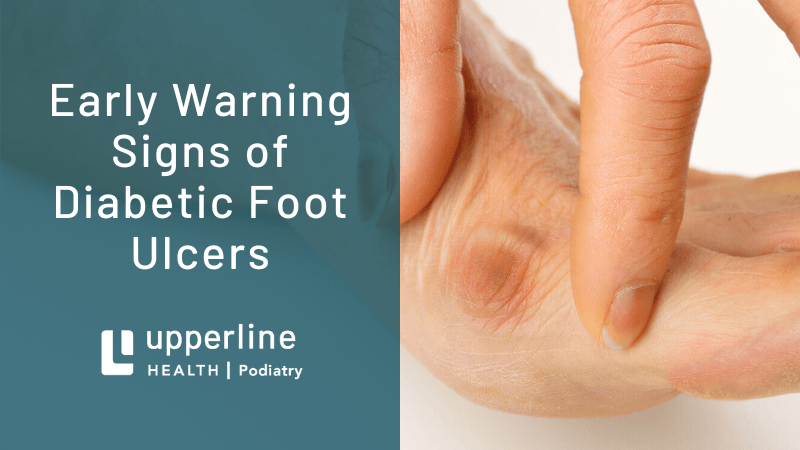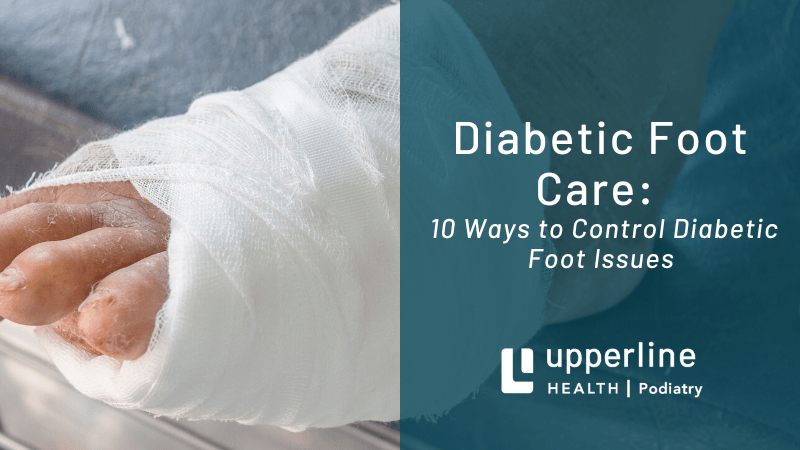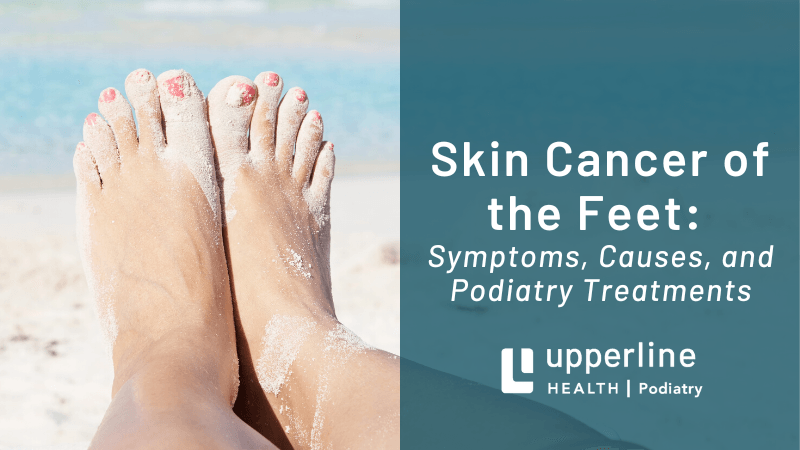Toenail Fungus Causes and Treatment Options - Dr. Michael King

JC: Welcome to the elevator podiatrist, the show where we ask common foot and ankle questions to top podiatrist from around the country. There's no appointment or copay required for this one-on-one Q and A, only free advice from individuals who have devoted their lives to all things feet. I'm your host Joe Crosby. And today I'm joined by Dr. Michael King, medical director at upperline health in Nashville, Tennessee.
Alright, nail fungus. So nail fungus causes toenails to become thick, brittle, crumbly, ragged, they can become discolored, spotted. So we're, you know, we're coming into fall and it still feels like summer people are probably still at the pool and beach. So how can someone safely hide toenail fungus?
MK: Well, you know, let's take a minute to talk about what it is. Nail fungus is, the medical term is onychomycosis and mycosis is fungal and onycho is nails. So it's nail fungus. Nail fungus of the feet is one of the most difficult things to treat. It's not dangerous. It's not highly contagious and there's great debate about that. It's not super contagious. I've always been of the opinion of the side that it's not, it's one of those things you either get it or you don't. I handled it for 30 years, mostly gloved and never had a spec. So that being said, those that get it, it's tough to get rid of it. And so there are lots of different approaches to that. We can talk about that if you want as well. How do you hide them? That's tough. And you know, I, I had patients who bought artificial nails and I, I would tell them that was fine, but they had to be on a short term basis because they're just another occlusive modality that makes the fungus want to grow. If funguses love warm, dark and moist, what a better place than the shoe. Right? So that's part of what continually feeds the cycle. So hiding them. The other option, the biggest option, especially for women is, is nail polish. You know, there are medicated nail polishes if you like those. I've never been a big fan of them but I've never seen problems with them. So a nail polishes and option. My only suggestion to women is that, you know, paint them up, make them nice, hide it. But when you're done with the beach or your say your weekend vacation, take it off. There are some of those that are more porous than others and allow the breathing and the cleansing. Most of them are not. Most of them are acrylic based, which is really just like a lacquer on your walls or a latex on your walls of your house. So but nail polish is acceptable. Fake nails. Occasionally I just don't like those for any longterm usage.
JC: Okay. And then other than the actual look and texture of the nail, is there any other symptoms? You know, you said it's not a dangerous, it's not a dangerous thing, but is there anything, are there any other symptoms that coincide with toenail fungus?
MK: Well, toenail fungus can be painful and most of the time it's a combination of factors. One, the thickness and the brittleness you talked about and just adds girth to the nail. So it's like having someone's thumb on your thumb all day, especially when you're wearing shoes. Because of the way that many of them work, they get what's called subungual debris, which is a lot of a lot of junk, Schmitz underneath the nail. It can actually loosen the nail and so you can actually lose a nail. Now you can lose it painlessly, but you can also lose it painfully. And so sometimes just that separation of the nail from the nail bed can create discomfort. So actually debriding or cleaning, trimming, cutting, filing them down on a rather frequent basis is a good idea to help minimize that risk of pain. Really seeing a podiatrist is the best thing to do. Let them give you advice as to the limitations that you have with it. Maybe the, and also making sure you don't have some secondary bacterial infection. Funguses and bacterias are not the same thing. So, you know, funk, bacterial infections like ingrown nail to get infected, those are serious, that's a, that's a whole different kettle of fish. Fungal infections are a pain in the butt. And they can be bothersome. They can be itchy, they can be irritating, they'd be painful. You know, and answering an FAQ by the way is that this is not the same fungus that people read about from dr Google that says they have in their liver. This is a different type of fungus. It's a different kind of animal so you don't have to worry about like it's going to spread to your liver, get in your bloodstream. And I heard that question a lot. But the pain really typically is from the girth of the nail and seeing a podiatrist to figure out your best options for management is really the best thing to do.
JC: Okay. we're a DIY society. We, we want to fix it ourselves before we call the doctor. What would be your recommendations for the, you know, again if we're going to go to dr Google, they're going to find, you know, the top fungal cream, that sort of thing. What would you recommend as the top over the counter items that someone could just, you know, go to the store and get.
MK: Well obviously based, if you've gone by the counters recently, you've noticed that there are a plethora of options. And that's because Oncomycosis is a billion business in America alone. And so everyone and their brother is developing, you know, the guaranteed get rid of your fungus lotion. When somebody really finds that Joe, they will be rich. But I've never found it. So answering your question, the biggest thing I told patients was I, it was great when you help yourself and if you're gonna try things, that's awesome. Just try things that do no harm. That's the first rule in my office. That should be the first rule in your house. Okay? So you don't want to use heavy duty acids or things like that that eat up the nail, not without physician guidance on that, because you can hurt and hurt yourself. One of the most common things that people find if you're going to use something is to look for tolnaftate, which is basically the old Tinactin. It's an antifungal agent that's found in most of these things within reason. So really any of those are good. You know, I used to love a stuff called fungo tincture. I'm not even sure it's around now. Funky nail. There are several things like that that are all in the same club. Whether they work or not is debatable. I've had people tell me that they soak their feet in vinegar and white cider vinegar. It can be helpful. Anything that's caustic to the fungus can be helpful. So I have no problem with people trying those sorts of remedies. They're safe. Even if you treat it through your doctor with the best medical approach, you're looking at six to 12 months if you're really going to cure this, because in essence, you don't kill fungus, you prevent it to regrowth, and you have to begin at the beginning of the nail and the nail grows a 10th of a millimeter a day, which means you're looking at probably in the average person, seven, nine months to grow a nail out. The hardest part that most people, things are, they don't do Joe, was they're not diligent. They're not consistent. They're not diligent or patient to realize it's going to take the time. And they got mad at me all the time when I told them the truth. This is the deal. This is what you're up against. This is the timeframe. This is what I'd expect at one month at three months at, you know, and we're an American society, as you mentioned, we're DIY. Oh, I can fix that better myself. Well, that's fine. As long as you don't hurt yourself, knock yourself out.
JC: And then you know, alternatively on the, on the podiatric side of things, you know, sounds kind of like Star Trek, we're getting into star Trek. There's, there's treatment options like laser therapy, toenail fungus. So what are the top professional treatment options for tonal fungus?
MK: Well, the top professional options, number one is debreavement and cleansing. And that's really where you're getting them down to a more normal girth where they're not as likely to be injurious, not limiting one's ambulation because of the pain, not changing the way your shoe gear fits leading to falls and problems and things like that. And that kind of goes back to your earlier question about the, the pain side of it. That's one. Secondly, are the topical medications. Of course the OTC things you talked about over the counter, there are prescript all sorts of prescriptive agents or even over the counter agents you can get only from your doctor. Tetra makes a lot of products like formula three and formula seven that we use in a lot of our clinics that I had really good luck with in practice. From there on you can, you can actually go to heavy duty prescriptive topical agents such as Jublia or Penlac; very expensive. I had good luck with Jublia when I could get it approved. But it's very expensive medications. And then from there you can go to oral medication where you can actually treat the fungus with oral medicine that the gold standard right now is Lamisil, which is a once a day therapy for three months. And then you wait the six months to see if the nail grows out. There are some other more heavy duty like diflucan that you can use, but they just have a few more potential complications or side effects I should say with those medications compared to say Lamicil. And in the star Wars age there's, there's a laser therapy. I'm not a great expert in laser therapy. I've seen successes in it in a significant number of people. And I think it depends on the clinical circumstance, the severity of the fungus, the type of patient. I always found the laser therapy did the best in combination with topical therapy. At the same time just to supplement what was being done with the laser. But in essence, in essence, the laser bakes away or cooks the fungus so that the nail can regenerate with less fungal involvement. But the nice thing about laser therapy is that it's painless. It's easy, there's no downtime, no loss of work time, no out of, you know, healing time. The, the downside is that it's not covered by insurances, so it has to be a cash business. But if you think about it, you're going to the dentist and paying the same money to have your mold made, you know, for your teeth or your new cap or your bridge and you know, so it's the same thing when it comes to foot health. It's important.
JC: Okay, last question. Will toenail fungus, Can toenail fungus go away on it's own.
MK: Occasionally I will tell you that probably counting my two hands, how many times I saw that occur because somebody was almost always doing something. I have seen it resolve, self resolve, and the, it was very unique circumstances. There were a couple of people, interesting enough one of my patients was a chemotherapy patient and I saw plenty of people with chemotherapy who is altered and weakened immune system led to getting a fungus. I saw a couple of my chemo patients who, it appears the chemo killed the fungus. So, so that's obviously a very unique circumstance, but in, in general population, very rarely. I mean, I would see a few, but over 30 years, not many. So you're gonna be doing something, you're going to be doing something and you're just going to be battling it. And it's rather chronic. And it's, it's just super annoying. I mean, it's a, you know, it's a big part of what we do and it is important, especially with the people who are symptomatic. But it's the good news is it isn't dangerous. It's just, but it's a challenge to manage.



